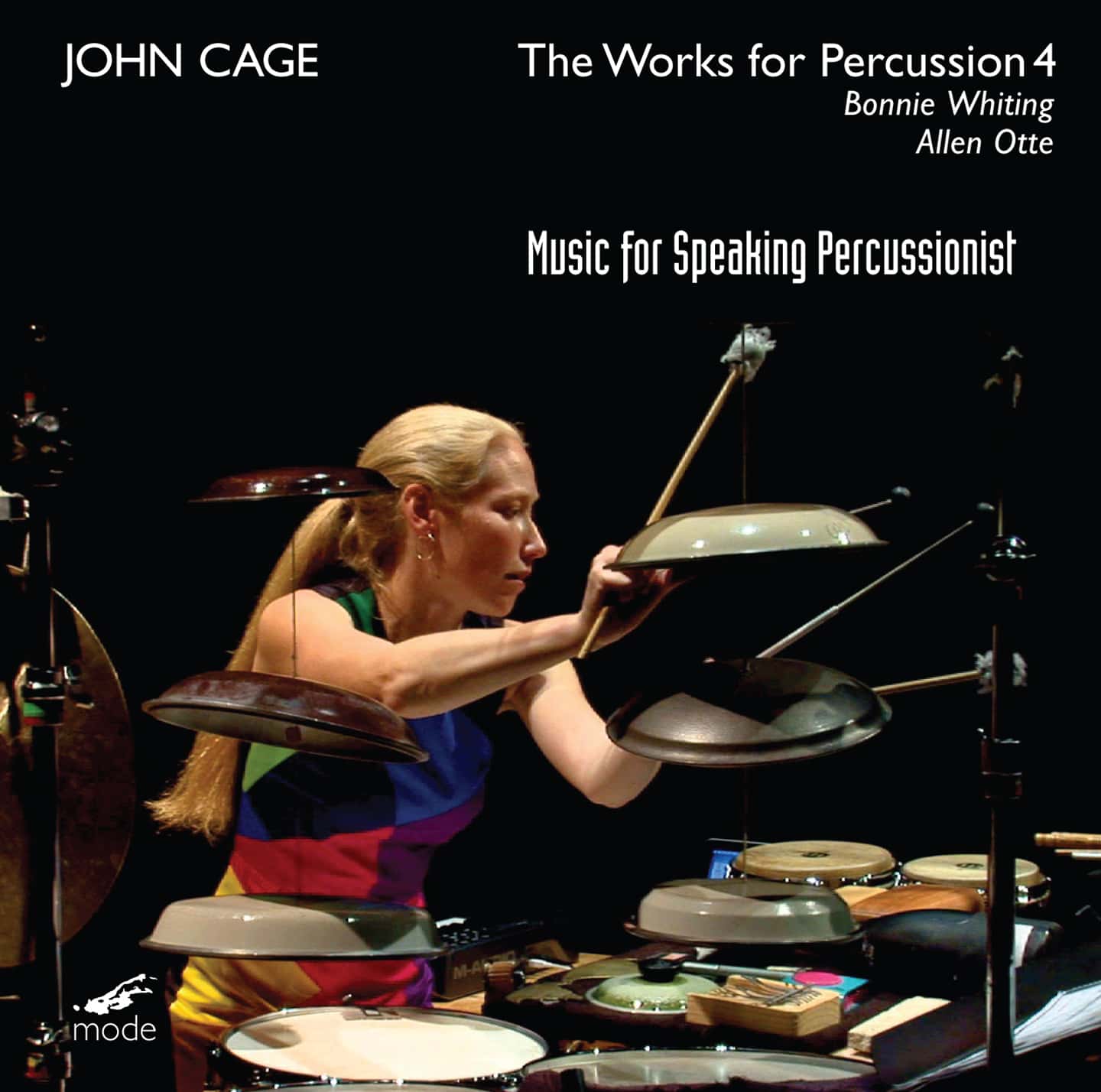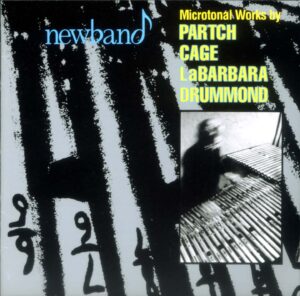1. A Flower (1950) 3:40
2. 51’15.657” for a speaking percussionist (2010) 51:22
a solo-simultaneous realization of 45’ for a speaker (1954) and 27’10.554” for a percussionist (1956). Realization by Bonnie Whiting
3. Music for Two (By One) (2011) 13:38
a solo-simultaneous realization of Music for _____ (1984-1987) for solo voice and solo percussion.
Realization by Bonnie Whiting
4. The Wonderful Widow of Eighteen Springs (1942) 2:52
5. ALLEN OTTE (b. 1950) / JOHN CAGE
Connecting Egypt to Madison through Columbus Ohio, Cage, and the History of the American Labor Movement (2011) 7:18
incorporating Music for Marcel Duchamp and Variations 2
Allen Otte, voice, prepared piano & frame drums
John Cage allowed for some of his works to be combined and performed simultaneously. Percussionist Bonnie Whiting has created uniquely virtuosic solo-simultaneous realizations of some of these works for “speaking percussionist.”
51’15.657” for a speaking percussionist is Whiting’s solo-simultaneous realization of all of 45’ for a speaker (1954) and 27’10.554” for a percussionist (1956). Cage wrote 45’ for a speaker to perform himself. He wrote on thirty-two subjects and added a series of gestures (gargling, lighting a match, etc.) to be performed during the delivery. Like the percussion piece, each page is one minute long.
Between 1984 and 1987 Cage composed 17 pieces called Music for______. Any of these pieces can be performed alone or together in any combination. Here Whiting combines one of the percussion versions with the version for voice.
Her recital is completed by Cage’s two beautiful, classic, early pieces for voice and piano: The Wonderful Widow of Eighteen Springs and A Flower. Here the piano is used as a percussion instrument, never played on the keys but rather knocked and slapped on by the pianist. As in the larger works, Whiting gives a tour de force performance of both parts simultaneously.
As a bonus, Whiting’s mentor Allen Otte (of Percussion Group Cincinnati) performs his work for speaking pianist/percussionist which is created around works of Cage and utilizing Cage’s compositional “tools” for both the music and text.
Liner notes by Bonnie Whiting.


